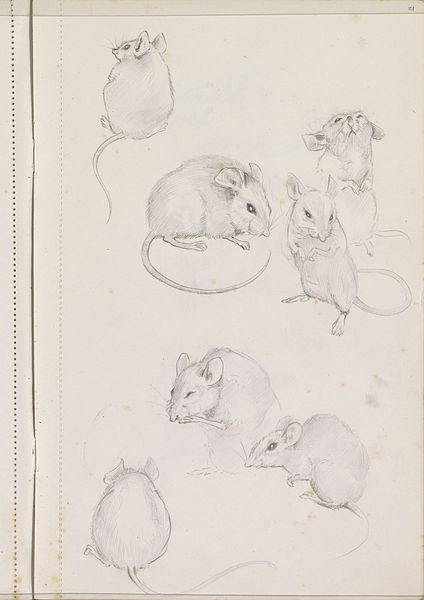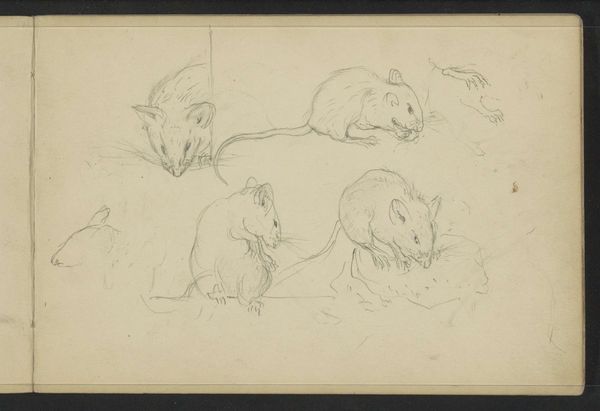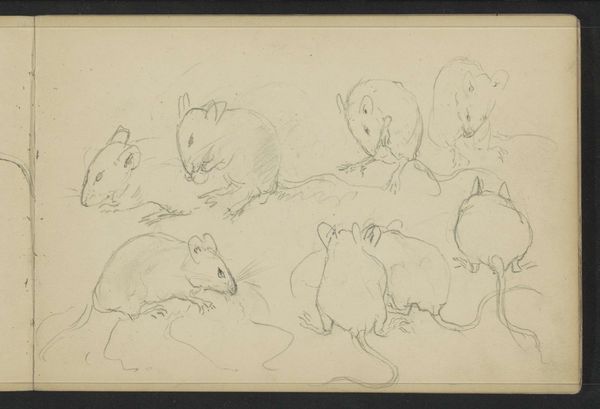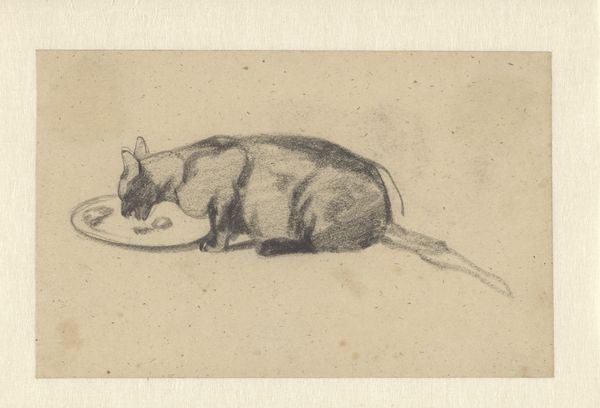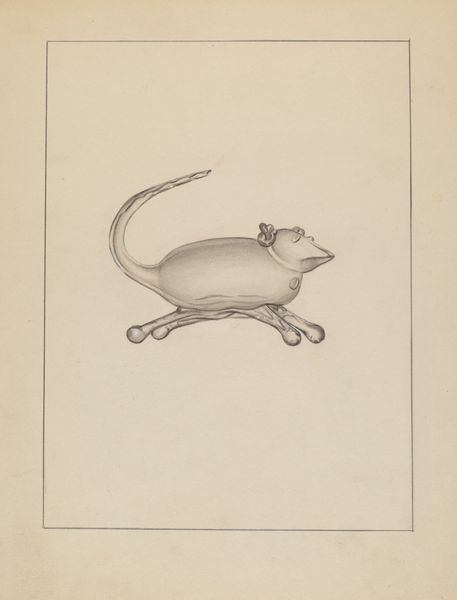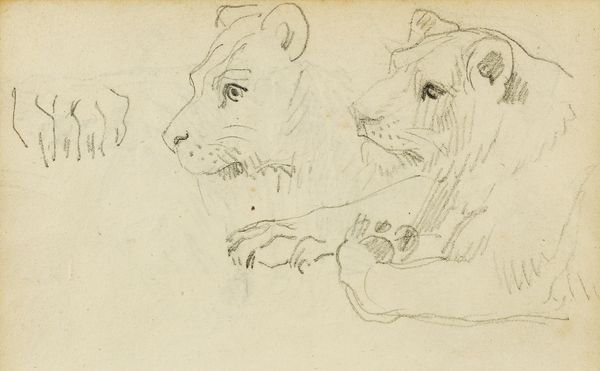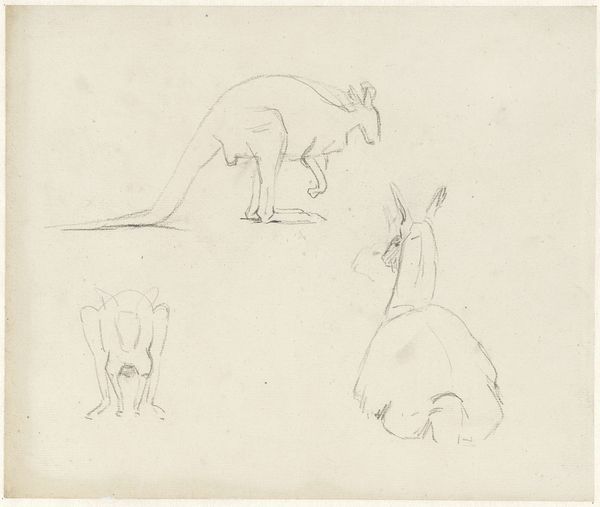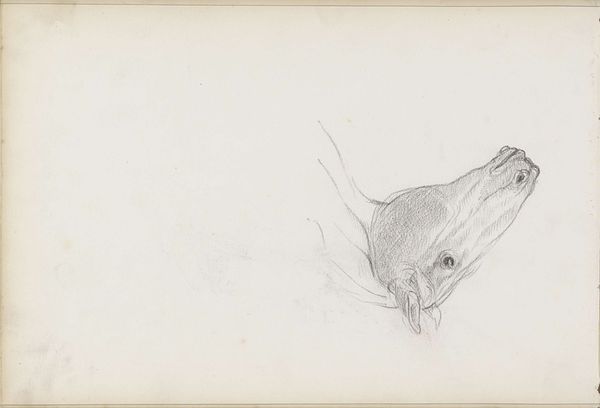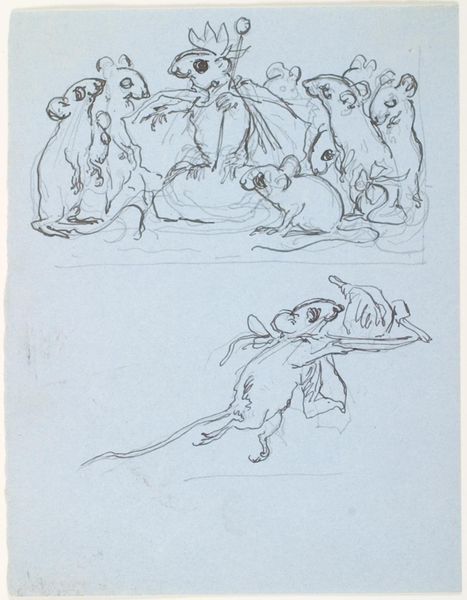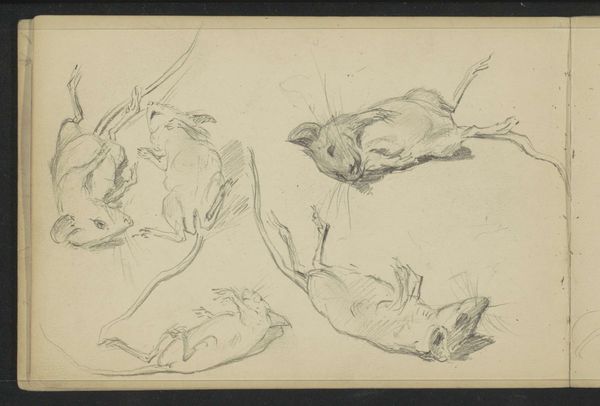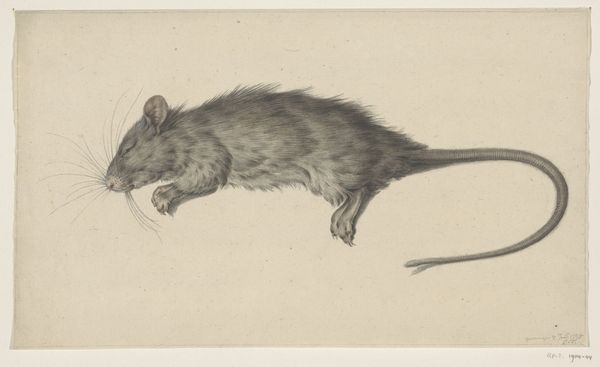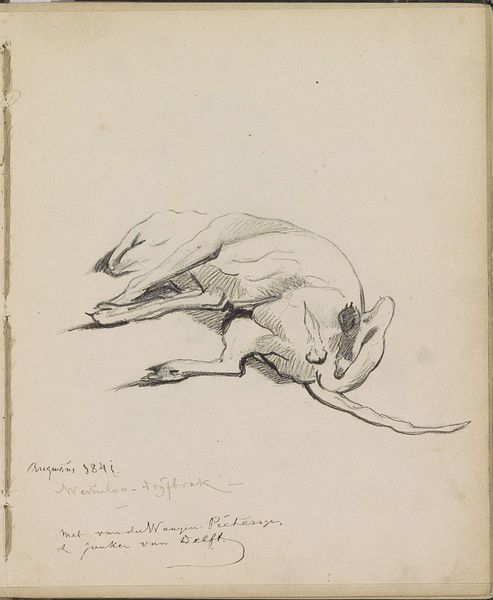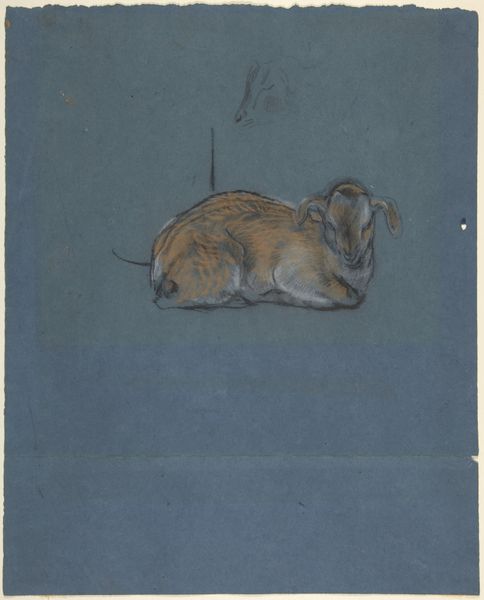
#
amateur sketch
#
pencil sketch
#
personal sketchbook
#
idea generation sketch
#
sketchwork
#
ink drawing experimentation
#
detailed observational sketch
#
sketchbook drawing
#
storyboard and sketchbook work
#
sketchbook art
Copyright: Rijks Museum: Open Domain
Curator: Looking at this page, filled with sketches, brings to mind similar sheets by masters like Leonardo. The artwork here is "Muizen," or "Mice," by Otto Verhagen, made somewhere between 1928 and 1930. It's a set of graphite studies, presumably from a sketchbook. Editor: My initial impression is one of immediacy, like a snapshot of ephemeral, fleeting moments. They seem caught mid-gesture, alive with tiny twitches. Curator: Precisely. Verhagen captures movement economy through sparse, assured lines. Note the distribution of value; see how the darker areas suggest volume and groundedness, while the lighter areas imply movement. There's a delicate tension here. Editor: It makes you wonder about Verhagen's life. Mice were quite common. What motivated him to devote precious art materials to the mundane? Could they represent social class? The overlooked members of society surviving through stealth and grit? Curator: I find it unlikely. Look closer at the details; there are multiple positions; one mouse is scratching its ear; one nibbles its paw. They are scientific investigations! Studies of form and behaviour, as one might see in Eadweard Muybridge's photography of animals in motion. The artist is more interested in observation and understanding than in offering overt social commentary. Editor: Fair point, yet considering his life through the Great Depression in The Netherlands adds weight. It's difficult to disconnect that from the choice of subject, the humble mouse, the ultimate survivor. Curator: I agree that wider circumstances inevitably play a part. Yet Verhagen's engagement seems deeply invested in the inherent compositional possibilities. Consider the interplay between the negative space surrounding each creature. Editor: Regardless, it leaves me admiring these little survivors even more, now thinking of social implications and appreciating their formal grace. Thanks for providing clarity. Curator: My pleasure; seeing how structural observation enhances emotive insight always validates these enquiries for me.
Comments
No comments
Be the first to comment and join the conversation on the ultimate creative platform.

